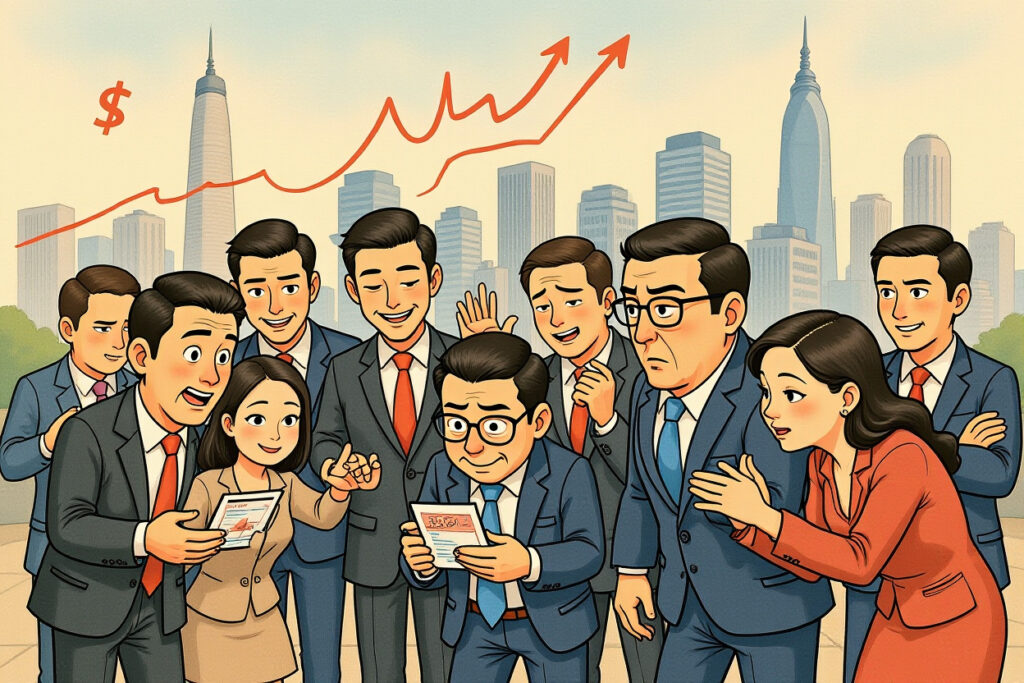– Trump’s 100% tariff proposal targets pharmaceuticals but excludes EU and Japan due to existing trade agreements, setting a ceiling of 15% for EU imports.
– The exemptions highlight the complexity of international trade frameworks and could influence US drug pricing and supply chains.
– Investors in Chinese equities should monitor potential spillover effects on Sino-US trade relations and pharmaceutical sectors.
– Regulatory nuances, such as the ‘under construction’ clause for US-based factories, add layers of risk and opportunity for global markets.
– This development may accelerate shifts in global pharmaceutical manufacturing, with implications for emerging markets like China.
Unpacking the 100% Tariff Announcement
The recent declaration by President Donald Trump (特朗普) of a 100% tariff on certain pharmaceuticals has sent ripples through global markets, but exemptions for key economies like the European Union and Japan introduce critical nuances. White House officials clarified that countries with pre-existing agreements containing pharmaceutical clauses will not face the full brunt of these tariffs. This means imports from the EU and Japan will be subject to lower rates, as stipulated in their bilateral deals. For instance, the EU’s framework caps tariffs at 15%, while Japan’s agreement ensures parity with other partners. This exemption strategy underscores the administration’s attempt to balance protectionist goals with diplomatic realities, potentially softening the blow for multinational corporations.
Key Details of the Tariff Exemptions
According to Bloomberg reports, the exemptions are rooted in specific agreements. The EU-US framework sets a pharmaceutical tariff上限 (ceiling) of 15%, providing a缓冲 (buffer) for European exporters. Similarly, a US-Japan joint statement commits to non-discriminatory rates, ensuring Japanese products aren’t disadvantaged. President Trump (特朗普) emphasized that the 100% tariffs would only apply if companies aren’t actively building US-based factories, defined as having broken ground or being under construction. This ‘under construction’ clause adds a layer of conditionality, encouraging domestic investment while offering a loophole for compliant firms. Market analysts note that this could lead to a surge in US pharmaceutical manufacturing announcements, though logistical challenges remain.
Global Pharmaceutical Trade Dynamics
The 100% tariffs proposal arrives amid heightened trade tensions, with pharmaceuticals being a strategically sensitive sector. The exemptions for EU and Japan reflect their strong trade ties with the US, but other regions, including emerging markets, could face steeper barriers. For China, which is not explicitly mentioned in the exemptions, the situation warrants close attention. Chinese pharmaceutical companies, such as those listed on the Shanghai Stock Exchange (上海证券交易所), might experience indirect effects, such as increased competition or supply chain disruptions. Historical data shows that US tariff actions often trigger retaliatory measures, so investors should watch for responses from Beijing.
Impact on US Drug Prices and Supply Chains
If implemented broadly, the 100% tariffs could elevate US drug prices, contradicting Trump’s (特朗普) stated goal of reducing healthcare costs. However, the exemptions might mitigate this for EU and Japanese imports, which account for a significant share of the US market. For example, EU-based firms like Novartis and Sanofi supply critical medications, and higher tariffs could have been disruptive. Instead, the capped rates provide stability. Supply chain experts suggest that companies may accelerate localization efforts, but this requires time and capital. In the short term, investors should assess pharmaceutical stocks for volatility, particularly those with high exposure to US markets.
Implications for Chinese Equity Markets
Given this agency’s focus on Chinese equities, the 100% tariffs debate holds particular relevance. Chinese pharmaceutical firms, such as Sinopharm (国药集团) and Jiangsu Hengrui Medicine (江苏恒瑞医药), could see mixed impacts. On one hand, exemptions for competitors like EU and Japan might pressure Chinese exporters to seek similar deals or face disadvantages. On the other, it could spur innovation and domestic growth. Investors should monitor regulatory announcements from the China Securities Regulatory Commission (中国证监会) for guidance. Additionally, the US-China trade relationship remains fraught, and any escalation could affect broader market sentiment, influencing indices like the CSI 300.
Strategies for Investors in Chinese Pharma Stocks
Sophisticated investors might consider diversifying into Chinese companies with strong domestic pipelines or those exploring US partnerships. Key metrics to watch include:
– Export dependency ratios for Chinese pharma firms
– R&D spending trends in response to tariff pressures
– Government subsidies or policy support from Chinese authorities
Quotes from industry leaders, such as a fund manager at China Asset Management (华夏基金), suggest that ‘agility in supply chain management will be crucial.’ Outbound links to resources like the Ministry of Commerce of China (商务部) website can provide updates on countermeasures.
Regulatory and Economic Analysis
The 100% tariffs initiative fits into a broader pattern of US trade policies under Trump (特朗普). Historically, such measures have led to market volatility but also opportunities for arbitrage. Economists point to the World Trade Organization (WTO) frameworks that might challenge these tariffs, though the US has previously bypassed such mechanisms. For Chinese markets, the situation echoes past tensions, such as the 2018 trade war, which saw significant swings in equity prices. Experts recommend modeling scenarios where tariffs expand to other sectors, potentially affecting Chinese technology or manufacturing stocks.
Expert Insights on Market Trajectories
A senior analyst at Goldman Sachs (高盛) noted, ‘The exemptions for EU and Japan create a bifurcated market, where compliant regions thrive while others struggle.’ Data from the International Monetary Fund (IMF) indicates that trade barriers could slow global GDP growth by 0.5% annually if widespread. For China-specific implications, references to the People’s Bank of China (中国人民银行) monetary policy reports can offer clues on defensive strategies. Investors should prioritize stocks with low US exposure or those benefiting from import substitution policies.
Forward-Looking Market Guidance
In summary, the 100% tariffs proposal, with its exemptions, underscores the importance of trade diplomacy in market stability. For participants in Chinese equities, vigilance is key—track US policy developments, assess company-specific risks, and leverage hedging instruments. The ‘under construction’ clause may lead to a wave of US investments, but global supply chains will adapt. As next steps, consult real-time data from sources like Bloomberg or Reuters, and engage with financial advisors to navigate potential disruptions. This episode reminds us that in interconnected markets, proactive strategy beats reactive panic.



